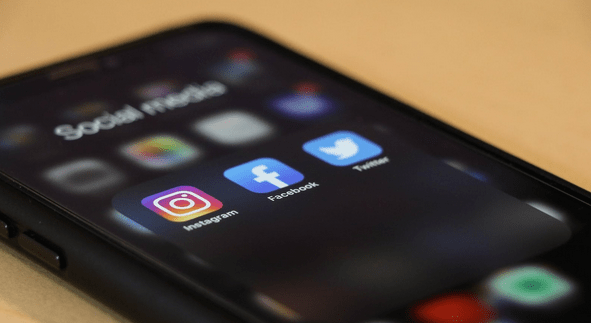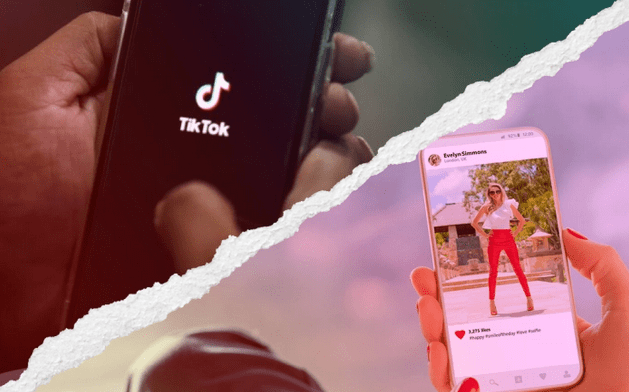Across the country in Florida, it’s 3 a.m., and Emily is on her smartphone eyeing a set of golf clubs a local pro shop advertised in an email. With a flick and click, they’re hers.
Once relegated to after-work hours or weekends, shoppers now make purchases around the clock — while at work, lunch, during their commute, on vacation and when they can’t sleep at 3 a.m.
And they often switch between multiple devices throughout the day. There’s the work computer, a personal laptop, home desktop, smart phone and iPad. And that doesn’t account for brick-and-mortar shoppers that want an in-store experience.
Brands can meet these customers where they are by offering products and services across various online and offline channels — on a website, app or social media account, via email or text, at retail locations and public events. Companies can capture it all through omnichannel marketing.
What Is Omnichannel Marketing?
Customers desire a positive, seamless experience — no matter the path they take or device they use. Omnichannel marketing seeks to enable that desire by creating a cohesive, unified journey for each customer across all brand channels.
Cohesiveness across channels is a critical component. As opposed to multichannel marketing, which includes multiple channels that remain separate, omnichannel allows all online and offline channels to work in unison across touchpoints, devices and departments. With it, customers can bounce from smartphone to laptop to retail store and have a smooth experience.
Major Retailers Embrace It
Many large retailers have already incorporated omnichannel strategies, making the customer journey easier and more convenient.
- Starbucks provides an app for use both online and in-store, incorporating a rewards program that allows customers to avoid lines and order ahead, gain free refills, use birthday bonuses and earn points for free products.
- Amazon aligns its experience across a retail website, streaming service, mobile apps and connected Alexa devices and smartwatches.
- Walgreens unifies its brand between in-store and online purchases through a customer loyalty program app that provides rewards, discounts and information about in-store events and sales.
- Home Depot offers an app to help customers find products online and in-store, also including live chat and image search.
- Disney app and loyalty cards allow visitors to check ride times and book tickets without standing in a long line.
Social Media Sells
With an active, integrated presence on social media accounts, brands have the opportunity to create a community.
A report from Statista predicted that by 2026, worldwide sales through social media platforms will reach $2.9 trillion — with the most influential content for buyers coming from posts made by acquaintances and connections.
McKinsey & Company reported that, with 60% to 70% of consumers researching and making purchases online and in-store, omnichannel is here to stay and will continue to grow. Their research also revealed that social media channels influence all age groups — particularly younger customers.
Outstanding Omnichannel
If the message a brand sends is unified and consistent across all channels, it better be a good one. Knowing what’s important to consumers today can help organizations create the best communications and serve to reflect their commitment to providing a positive customer experience.
Salesforce’s 2022 analysis of consumer and business buyer data revealed several factors worthy of consideration when creating an omnichannel platform, including:
Favourite Channels
- Phone
- In-person
- Online chat
Channel Surfing
- Customers turn to an average of nine different channels to communicate with companies.
- 57% of customers prefer to engage through digital channels, but 43% prefer non-digital channels — meaning satisfying customers generally requires great experiences both online and offline.
Loyalty
- 83% of customers say they’re more loyal to companies that provide consistency across departments.
- 71% of consumers switched brands at least once in the past year. The top three reasons were better deals, better product quality and better customer service.
Experience
- 88% of customers say the experience a company provides is as important as its products or services.
- 94% say a positive customer service experience makes them more likely to purchase again.
Emotion
- 62% of customers feel an emotional connection to the brands they buy from most.
A recent Forrester report indicated that while customer experience rankings decreased for 19% of brands in 2022, the highest rankings were achieved by brands that provided customers with “high emotional quality” across their experiences.
And happy customers are a forgiving bunch — with data revealing that 54% of customers who feel happy, valued and appreciated are more willing to forgive brand mistakes.
Omnichannel in Action
Karla Medrano, a registered nurse and founder and operator of SGM Medical Marketing, said omnichannel marketing isn’t just about using every available channel for marketing, although that’s important too. It’s also about breaking down an organization’s various customer-facing channel-based silos.
“Being omnichannel is about taking a consumer-centric view of marketing tactics,” Medrano said. “In other words, the consumer’s experience comes first and your organization needs to be seamless in its branding, messaging and online and offline presence.”
When tasked with assisting AmbitCare in developing a stronger digital presence, Medrano employed an omnichannel strategy.
AmbitCare, a provider of free resources to physicians, caregivers and patients affected by rare diseases, had an inadequate social media presence. Medrano’s agency began to define content pillars and cohesive messaging across all channels to help potential patients learn about services. They also created content for the Spanish-speaking population.
After 60 days, said Medrano, the total net audience increased 81.3%.
Recently, her team implemented an omnichannel marketing strategy for a health/wellness start-up app specializing in post-partum. It’s still in the testing phase, but so far, Medrano said the results have been promising.
The app creators came to the agency with the issue of poor adherence rates; they wanted to find a way to help participants finish the program. Medrano created video content, personalized email templates and a system to respond to questions and concerns in a timely manner.
As a result of this strategy, Medrano said adherence rates improved by 40%.
“My omnichannel approach via texts, emails, video content and therapeutic communication to help moms through the program made them feel heard and supported,” she explained.
Omnichannel Oversights
According to a McKinsey & Company report, while the right omnichannel approach can potentially increase brand value, a disjointed or disorganized strategy can destroy it.
Medrano said that a few common errors in the omnichannel strategy include automating everything and thinking that being on Instagram, Facebook, LinkedIn, etc., is enough.
“Sometimes people need to know that there is a human on the other side so they can feel supported,” Medrano said. “A brand can have 10 channels and have rotten customer service vs. a brand that can have three channels and have quality customer service that includes a chat box, timely email responses, personalized attention, courtesy calls, flexible pay options, SMS and more.”
She said another mistake is not asking for customer feedback and not providing staff with proper training to ensure a cohesive conversation, tone and branding.
“Leadership doesn’t interact directly with customers, so they don’t always know what works and what doesn’t,” Medrano explained. “Every single interaction customers have with your brand…should help them feel heard and supported. Otherwise, you can potentially lose customers, receive bad reviews and lose revenue.”
Branding Blunders
With over 15 years of experience guiding large consumer brands to develop customer experiences that deliver shared value, Freelance CX Strategist Jenny Neilsen offered her list of the recurring mistakes brands make in their omnichannel marketing strategy:
- Brands trying to scale their high-level brand messaging across channels without considering the devices or experience. Each marketing asset should be helping to move the prospect through the funnel, not just shouting the same tag line at them.
- Saying they do omnichannel, but there is little coordination between in-house teams and agencies executing or designing the assets. All that equates to is running a lot of advertising simultaneously with little cohesion.
- Not using what they know about their audiences to execute a smart campaign.
“Brands need to understand and use online and offline data points to deploy personalized experiences across channels and physical locations,” Neilsen said. “Every brand has hurdles when it comes to the shape and location of their data, so they either need to roll up their sleeves and make the data work for them manually or invest in technology to help them do it faster.”
It’s Not for Everyone
As founder of Jennis Consulting Group and co-founder of Founders Compass, a mentoring consultancy for new start-ups, Steve Jennis places omnichannel marketing at the bottom of the priority list for start-ups.
He believes omnichannel marketing is good for customer retention because customers return to places where they have a good buying experience. But for a new business, he classifies it as a “back-end operational process that comes after marketing and sales have been successful.” A good product coupled with solid marketing and sales should come first.
“Without good marketing and sales, omnichannel is useless as customers don’t have a good reason to buy anyway,” Jennis said. “As such, it’s pretty low down as a priority for a start-up unless it gives you a real competitive advantage. But better products, marketing and sales will be more effective at that than channel choices.”


















